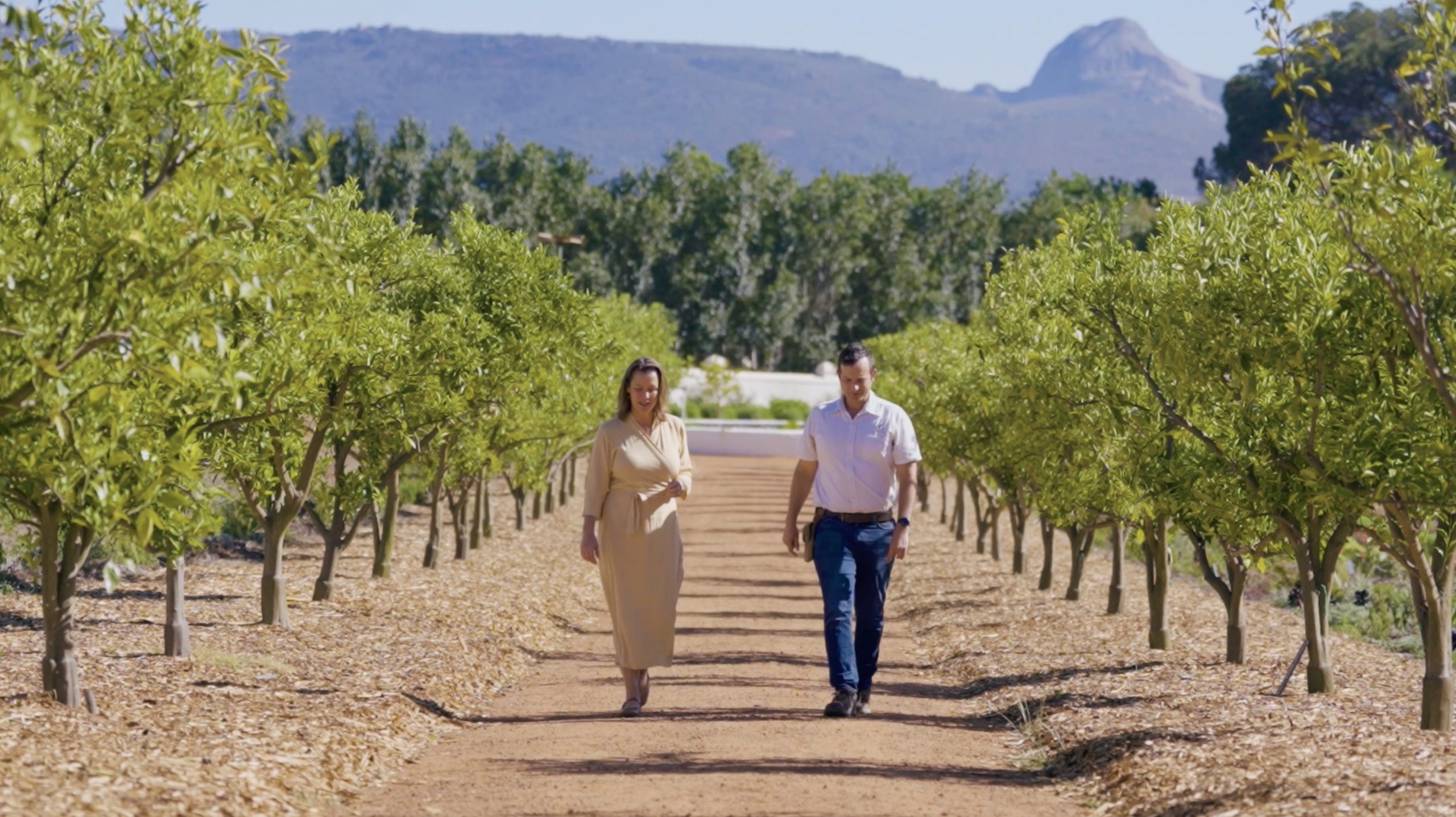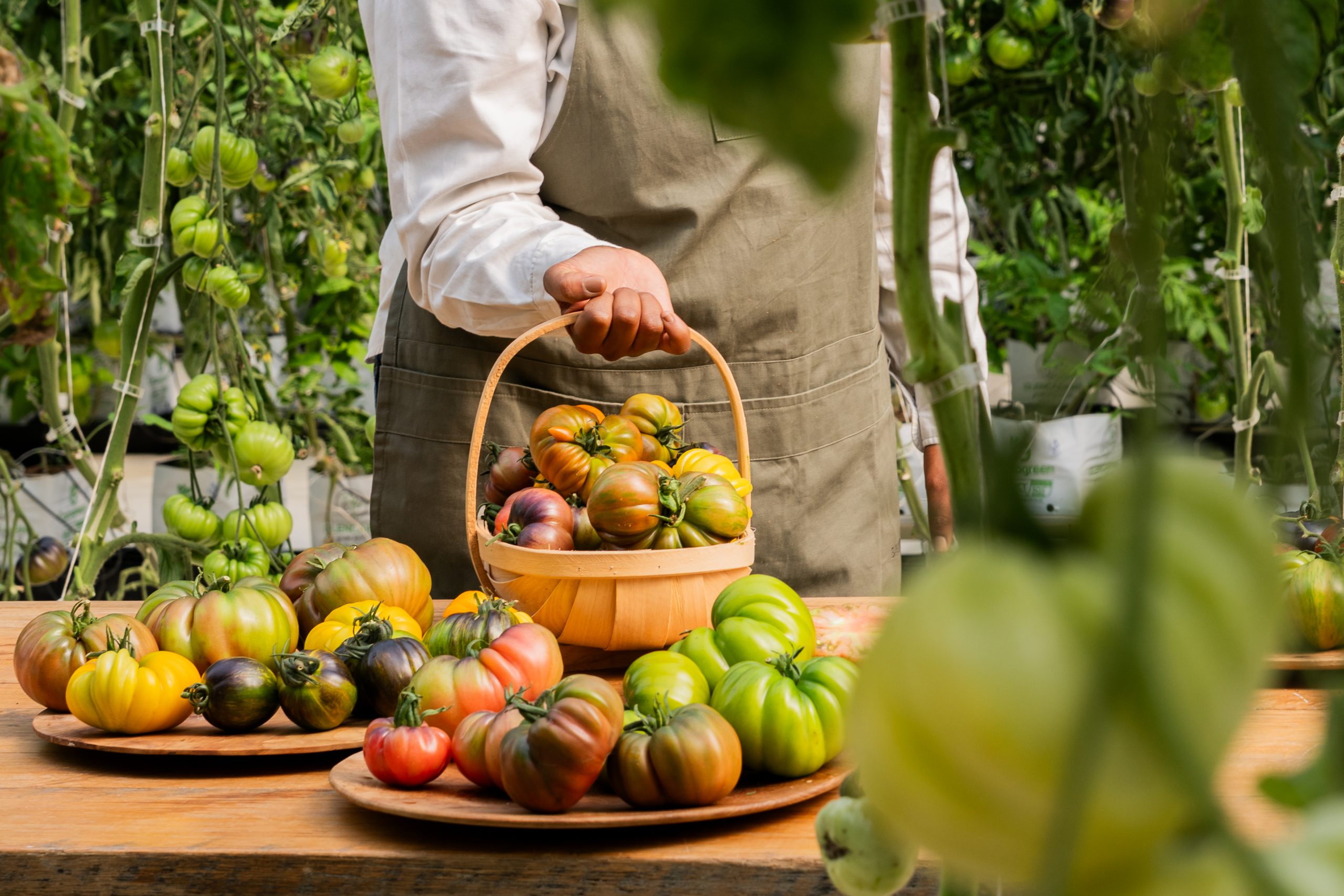The sweet and the sour
March 9th, 2021Sour figs are unique to South Africa and probably best known for the tasty jam they make. There’s lots to learn about this succulent and Ernst van Jaarsveld, resident botanist and horticulturist, shares some interesting information. Read on!

Sour figs (Carpobrotus) are robust, trailing, mat-forming succulents with useful, ornamental leaves and edible fruits popular for making jam. They belong to the vygie or mesemb family (Aizoaceae) – the largest succulent family in South Africa with about 1500 species.
There are seven sour fig species, growing mostly in South Africa’s winter rainfall areas in the Northern, Western and Eastern Cape. We gathered good-quality fruiting plants from their natural habitat in various locations. All of these species have been established in Babylonstoren‘s formal garden.
The genus name, Carpobrotus, is of Greek origin and pertains to their edibility (“carpos” = fruit, “brotos” = edible). But there is more to these plants than their fruits or horticultural use. Leaf sap is used medicinally – as gargle for a sore throat or it can be applied to treat bluebottle stings and insect bites. The large, attractive flowers attract honey bees.
In South Africa, members of the mesemb family are also known as vygies, an Afrikaans word that translates to “small fig”. We think it’s a perfectly good name as the young fruiting capsules of sour figs resemble small figs! Most vygies are magnificently created for their seed to be rain dispersed. As it dries, the fruit turns into a capsule with four (or more) cells, known as locules or small cavities. These locules have lids with expanding keels. When moistened, the lids fold open to expose the seeds to falling raindrops. When dry conditions set in, the lids close again.
Sour figs are popular in the Western and Eastern Cape because of their fleshy fruits and characteristic sweet-sour taste. Other common names include ghaukum, suurvy, ghounavy and elandsvy. The two most commonly harvested species are Carpobrotus edulis from the Western Cape and Carpobrotus deliciosus (ghaukum) from the Eastern Cape. These two grow widespread and are often found as pioneers on disturbed sites.

The fruits are generally the size of a man’s thumb. C. edulis is best eaten when it is dry and wrinkled, while ghaukum (C. deliciosus) and elandsvy (C. quadrificus) are eaten fresh in summer.
Sour figs are grown in Mediterranean coastal-type climates, not only for their edible fruits but also for their soil-binding ability and ornamental value. These areas include the Mediterranean region, southern England and California, where they are naturalised along the coast and often become invasive.
Sour figs have the largest flowers of the mesemb family, with those of the West Coast sour fig (C. quadrifidus) reaching 5–12 cm in diameter. The most common is C. edulis with its large yellow flowers, turning pink with age. Other flowers range from white to dark pink to purple. During the dry season leaves often turn reddish due to red pigments (betacyanins).
The most popular species
Carpobrotus edulis
The yellow sour fig is the most common of the seven species occurring in South Africa and mainly confined to the Cape’s winter rainfall regions. This vigorous, mat-forming, trailing succulent has elongated, green, asymmetrically three-angular ascending leaves measuring 5–12 cm. The large, yellow (rarely white) flowers are 7–9 cm in diameter, fading to a pinkish colour.
After pollination, the club-shaped fruit appears, turning yellowish (with a sweetish aroma) when mature in late spring and summer. It can be eaten fresh or dry. Fruits are sold at Cape vegetable markets and are popular for making jam. Leaf sap can be used for a sore throat, eczema and burns. This pioneer species is often found on disturbed sites and is extensively used as a ground cover to stabilise embankments.

Carpobrotus acinaciformis
The Strandveld sour fig (seefrontsuurvy) grows close to the coast from the Cape Peninsula to Stilbaai, usually confined to sandy soil in strandveld or fynbos vegetation. It is trailing and mat-forming, with sickle-shaped bluish to greyish green keeled leaves, measuring 9–13 cm long. Bright purple flowers, 7–10 cm in diameter, appear in winter and spring. The edible fruits mature in summer, becoming rounded, wrinkled and brownish, and have a long shelf life. Useful as a ground cover in seafront gardens.

Carpobrotus quadrifidus
The West Coast sour fig (elandsvy) is the largest of all the sour fig species and grows wild in strandveld along the western coast of the Cape. It is trailing and mat-forming, with scimitar-shaped, greyish-green keeled leaves, 8–14 cm long. The bright purple flowers (rarely white) appear during winter and spring. At 12–15 cm in diameter, this is the biggest of all the Aizoaceae. The edible fruit matures during late spring, when it becomes rounded and soft. It is eaten fresh and is reminiscent of a kiwi fruit. Useful as a ground cover in coastal gardens.
Carpobrotus muirii
The Albertinia sour fig grows wild in fynbos vegetation along the eastern part of the Western Cape, mostly on the sandy flats near Albertinia, intermingled with thatching reed. It is trailing and mat-forming, with narrow, greyish green, keeled leaves of 6–8 cm long. It is easily distinguished by its very narrow leaves, only 5–6 mm in diameter, often tinged reddish. The bright purple flowers appear during winter and spring, 6–9 cm in diameter. The edible fruit matures during summer, becoming rounded, wrinkled and brownish, and has a long shelf life.

Carpobrotus deliciosus
Ghaukum (ghounavy) is very common in the Eastern Cape (but also occurs in the eastern portion of the Western Cape), where it receives rainfall in winter and summer. It is a vigorous, mat-forming, trailing succulent with ascending elongated green to bluish green, keeled leaves, 4,5–11 cm in length. The large, pink to purplish flowers (rarely white) are 5–12 cm in diameter. After pollination, rounded fruits of 2,5 cm in diameter appear, becoming soft when mature in late spring and summer. They can be eaten fresh, but are good in jams too. It is a pioneer species found on disturbed sites and is extensively used as a ground cover to stabilise embankments.




